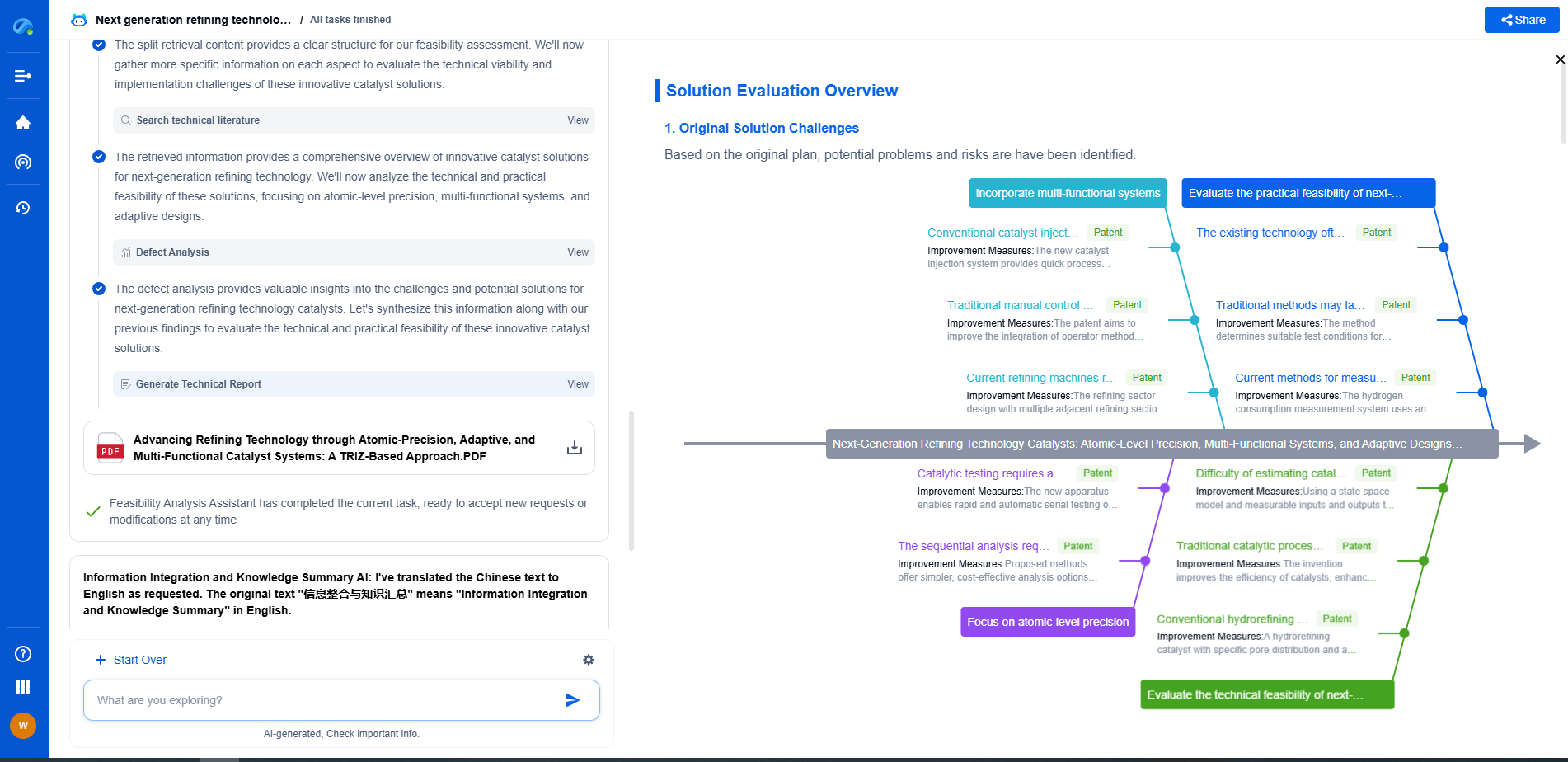Military Mobile Power Systems: Tactical Microgrids Explained
JUN 26, 2025 |
As military operations spread across the globe, there emerges a necessity for reliable and sustainable power solutions, especially in remote and hostile environments. Tactical microgrids have become an indispensable element in modern military strategy, providing autonomous, secure, and efficient power systems capable of meeting the diverse energy needs of military camps and front-line operations.
What Are Tactical Microgrids?
Tactical microgrids are small-scale, decentralized power networks that integrate multiple energy sources to provide electricity. Unlike traditional grids reliant on a single power supply, these systems can incorporate various generation sources including solar panels, wind turbines, batteries, and conventional generators. This hybrid approach ensures a constant and adaptable energy supply, crucial during military operations where conditions and requirements may change unpredictably. Their design allows for easy deployment and scalability, making them ideally suited for tactical environments.
Advantages of Tactical Microgrids in Military Operations
There are several key advantages to using tactical microgrids in military operations:
1. **Autonomy and Reliability**: Tactical microgrids are designed to operate independently of the main power grid. This autonomy is crucial in remote locations, minimizing the risk of disruption due to grid failure or sabotage.
2. **Efficiency and Sustainability**: By utilizing renewable energy sources such as solar and wind, tactical microgrids reduce reliance on fuel convoys, decreasing logistical challenges and enhancing sustainability. This not only lowers the carbon footprint but also reduces the operational costs associated with fuel transportation.
3. **Flexibility and Adaptability**: Tactical microgrids can be quickly adapted to changing energy demands. Whether powering communication systems, medical facilities, or weaponry, these grids can scale and adjust to meet specific needs.
4. **Security**: With advanced control systems, tactical microgrids offer enhanced security features, including the ability to quickly shut down or isolate sections of the grid in response to threats.
Components of Tactical Microgrids
Tactical microgrids consist of several interconnected components, each playing a vital role in the grid's functionality:
1. **Energy Generation Sources**: These typically include a mix of renewable energy sources (solar panels, wind turbines) alongside conventional diesel or gas generators to ensure a stable energy supply in varying conditions.
2. **Energy Storage Systems**: Batteries and other energy storage solutions are integrated to store excess power generated by renewables. This stored energy can be deployed during periods when generation is low or demand is high.
3. **Power Management and Control Systems**: These systems monitor and control the flow of electricity, optimizing energy distribution according to real-time consumption needs. Advanced control systems also provide remote monitoring capabilities, ensuring grids operate efficiently with minimal human intervention.
4. **Distribution Networks**: Microgrids include a robust network of cables and connectors that distribute electricity across the military base or operation site. This network is designed to be easily reconfigurable, allowing for quick adjustments in response to tactical changes.
Challenges and Considerations
Despite their advantages, implementing tactical microgrids in military settings presents several challenges:
1. **Initial Setup Costs**: Developing and deploying microgrids can involve significant upfront costs. While they generally lead to savings over time, budget constraints can be a hurdle in initial implementation.
2. **Technical Complexity**: The integration of various energy sources and storage systems requires sophisticated technical knowledge and expertise. Training personnel to manage and maintain these grids is crucial to their success.
3. **Environmental Factors**: In combat zones or harsh environments, the availability and reliability of renewable energy sources can be compromised. Microgrid systems must be designed to withstand these challenges without compromising performance.
The Future of Tactical Microgrids in the Military
As technology continues to advance, tactical microgrids are expected to play an increasingly prominent role in military operations. Innovations in energy storage, control systems, and renewable technologies promise even greater efficiency and reliability. Furthermore, the growing emphasis on sustainability and reducing carbon emissions will continue to drive the adoption of these systems.
In conclusion, tactical microgrids represent a pivotal shift in military energy strategy, offering a flexible, reliable, and sustainable solution to power military operations. By overcoming the challenges associated with their deployment and leveraging technological advancements, these microgrids will ensure military forces are equipped with the necessary energy security to succeed in diverse and dynamic environments.
Stay Ahead in Power Systems Innovation
From intelligent microgrids and energy storage integration to dynamic load balancing and DC-DC converter optimization, the power supply systems domain is rapidly evolving to meet the demands of electrification, decarbonization, and energy resilience.
In such a high-stakes environment, how can your R&D and patent strategy keep up?
Patsnap Eureka, our intelligent AI assistant built for R&D professionals in high-tech sectors, empowers you with real-time expert-level analysis, technology roadmap exploration, and strategic mapping of core patents—all within a seamless, user-friendly interface.
👉 Experience how Patsnap Eureka can supercharge your workflow in power systems R&D and IP analysis. Request a live demo or start your trial today.
- R&D
- Intellectual Property
- Life Sciences
- Materials
- Tech Scout
- Unparalleled Data Quality
- Higher Quality Content
- 60% Fewer Hallucinations
Browse by: Latest US Patents, China's latest patents, Technical Efficacy Thesaurus, Application Domain, Technology Topic, Popular Technical Reports.
© 2025 PatSnap. All rights reserved.Legal|Privacy policy|Modern Slavery Act Transparency Statement|Sitemap|About US| Contact US: help@patsnap.com

